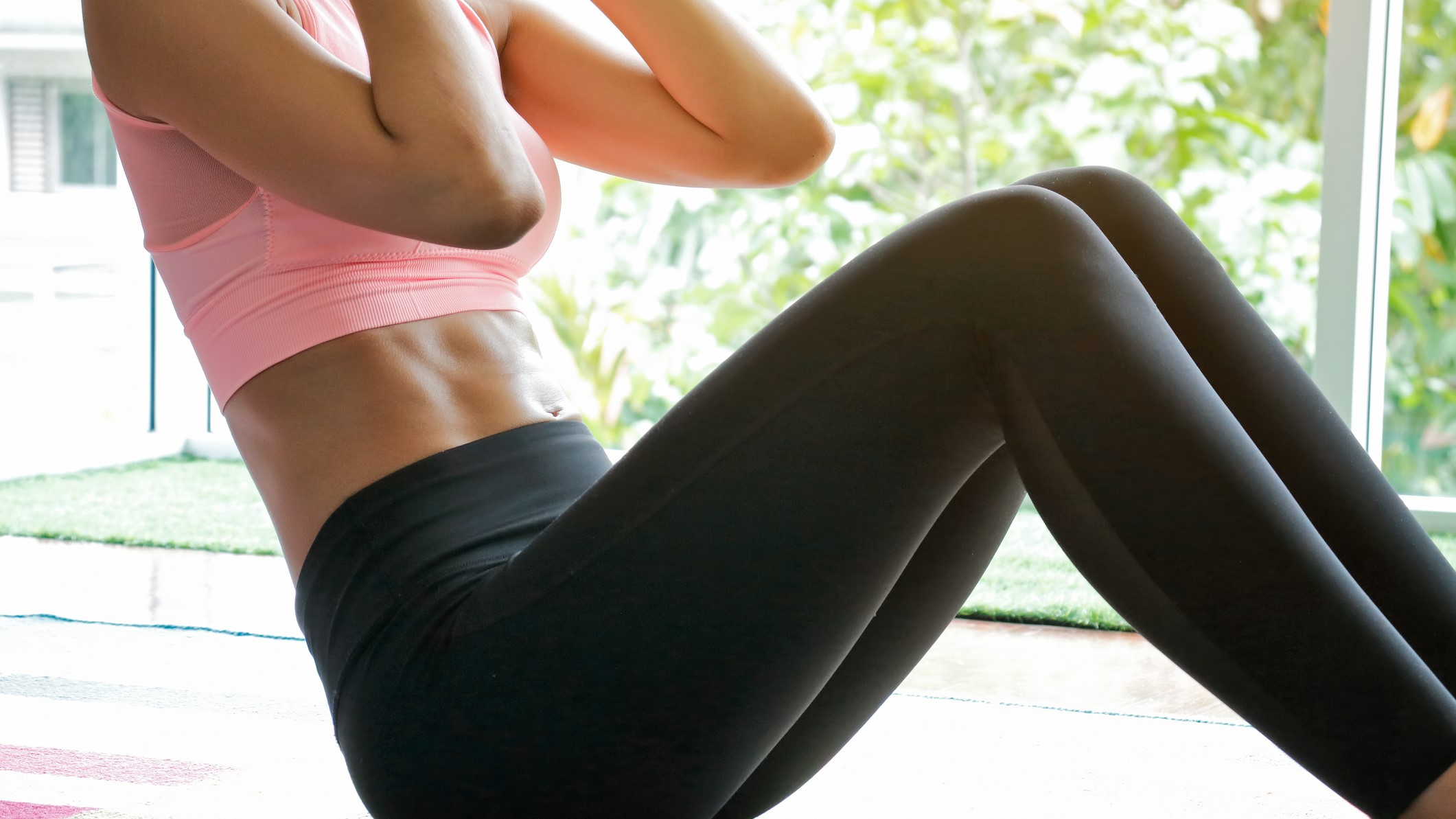Forget planks — this ab workout sculpts your core in 4 exercises
Save this one for your next ab finisher!

When it comes to working your abs, not all exercises are created equal, and if you’re looking for a workout finisher that’ll blast the muscles in your midsection, we’ve found it. Created by fitness trainer Courteney Fisher, this workout is designed as an intermediate core workout, that can be added to the end of a strength session, or used as active recovery on a rest day. Ready to get started? Read on to find the full workout.
As a reminder, no amount of crunches, sit-ups, or planks will help you sculpt visible abs, but they will help strengthen the muscles in your core. This is important for running stronger, sitting with better posture, and lifting heavier weights. If visible abs are your goal, you must focus on getting a low body fat percentage through cardio, strength sessions, and good nutrition. Here’s how to calculate your body fat percentage, and why it matters.
This ab workout works your core in 4 exercises
Ready to get started? Here are the four exercises you need to sculpt your abdominal muscles. Fisher recommends doing three rounds and resting for one minute between rounds.
A post shared by COURTENEY FISHER FITNESS (@justtcocoo)
A photo posted by on
Tabletop crunch: 15 reps
For this exercise, start by lying on your back, with your knees bent and your feet pressed into the floor. Rest your hands behind your temples, with your elbows extended out to the side. Breathe in, engaging your abs, and crunch your arms and legs off the mat, towards each other over your midsection. Pause here, then lower back to your starting position and repeat.
Supported elbow-to-knee crunch: 12 reps
Start this exercise in a v-sit position, engaging your core and sitting back on your seat bones, with one hand on the floor. Your legs should be extended away from your body. Place the hand not on the floor gently behind your head. Engage your core and crunch your opposite elbow to your knee, twisting your midsection as you do. Return to your starting position. Complete all 12 reps on one side, before switching.
Roll-back to sit-up hold: 12 reps
Start in a seated position on your mat, with your hands behind your head and your elbows out to the side. Roll yourself backward, engage your core, and lift your knees up to your chest, then extend your legs out and roll yourself back up to a seated position, keeping your arms behind your head throughout.
Hand-to-ankle tap: 45 seconds
For this exercise, start in a high-plank position, with your hands pressed into the floor, and your elbows stacked underneath your shoulders. Engage your core, and make sure there is a straight line from your head to your heels. Lift one leg off the floor, crunch it in underneath your core, lift the opposite hand, and tap the hand to your ankle. Lower your hand back to the ground and extend your leg out to your starting position.
Sign up to get the BEST of Tom's Guide direct to your inbox.
Get instant access to breaking news, the hottest reviews, great deals and helpful tips.
Fisher says this workout is part of her strength/Pilates series. Pilates has boomed in popularity lately, and one of the reasons for its cult following is its focus on working the core. The workouts focus on strengthening the midsection of the body, not just to sculpt strong muscles, but to allow you to stabilize and move better. Unlike a traditional Pilates class, Fisher moves quickly through her reps to get the heart rate up, therefore increasing the calorie burn of this workout.
Another benefit to working on your core is that it can reduce lower back pain, particularly important if you spend a lot of time sitting behind your desk working. Pilates works on the deep inner core muscles and pelvic floor, these muscles work to protect and stabilize the back. If you do suffer from lower back pain, it’s a good idea to check your form with a personal trainer to ensure you’re not putting your back under pressure.
This workout style is also low-impact, so while it’s definitely a fast-paced, intermediate-level workout, it won’t overload muscles you might have already worked in a strength session. For that reason, it’s a good pick for a rest day if you’re looking to add active recovery to your day. Following a day of strenuous activity, active recovery involves something like walking, swimming, or a low-impact strength workout, the theory being, active recovery helps improve your overall performance and clear metabolic waste faster than rest.
More from Tom's Guide

Jane McGuire is Tom's Guide's Fitness editor, which means she looks after everything fitness related - from running gear to yoga mats. An avid runner, Jane has tested and reviewed fitness products for the past five years, so knows what to look for when finding a good running watch or a pair of shorts with pockets big enough for your smartphone. When she's not pounding the pavements, you'll find Jane striding round the Surrey Hills, taking far too many photos of her puppy.
